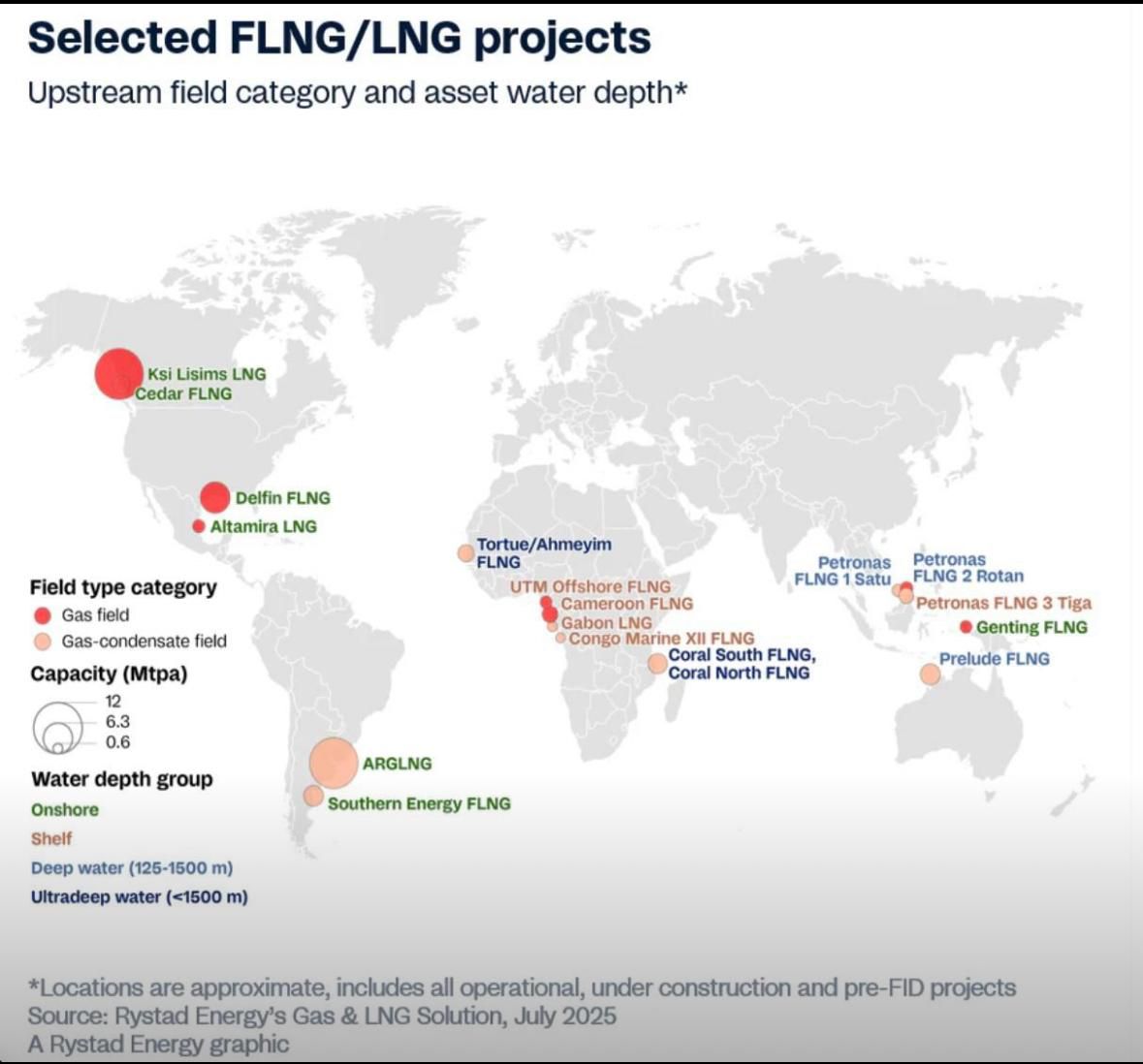Business
FLNG Boom: Floating LNG Capacity Set to Triple by 2030

Floating LNG terminals (FLNG) are gaining momentum in the global LNG market, and according to research by Rystad Energy, their capacity is expected to triple by 2030. Analysts note that FLNG units can be delivered much faster than onshore liquefaction plants, enabling more flexible project execution.
On average, new FLNG projects are completed in around three years, compared to roughly 4.5 years (adjusted for capacity) for existing onshore facilities. For FLNG vessels currently under construction, the average forecasted build time is even shorter — just 2.85 years.
This acceleration is a key factor behind FLNG’s growing appeal, as developers seek to minimise risks and speed up returns on investment. Additionally, in the event of a project shutdown, an FLNG vessel can be relocated or sold, showcasing the mobility and adaptability of FLNG assets.
-

 World News21 hours ago
World News21 hours agoCanada suffers 53% decline in foreign students, temporary workers over nine months
-

 News23 hours ago
News23 hours agoBREAKING: Over 20 Worshippers Kidnapped In Kogi ECWA Church Attack
-

 News21 hours ago
News21 hours agoTinubu Using EFCC To Haunt Opposition – Atiku, Obi, Others Raise Alarm
-

 News23 hours ago
News23 hours agoNorthern elders demand immediate termination of FIRS-France tax MoU
-

 African News24 hours ago
African News24 hours agoCoup: Benin Republic arrests Ex-president’s son
-

 News14 hours ago
News14 hours agoGrumblings in Nigerian Army over promotion of Tinubu’s ADC to Brigadier-General
-

 Politics22 hours ago
Politics22 hours agoTaraba governor receives APC membership card weeks after announcing defection
-

 News21 hours ago
News21 hours agoBandits comment: CSO tells Tinubu to redeploy Communication, Digital Economy Minister

















